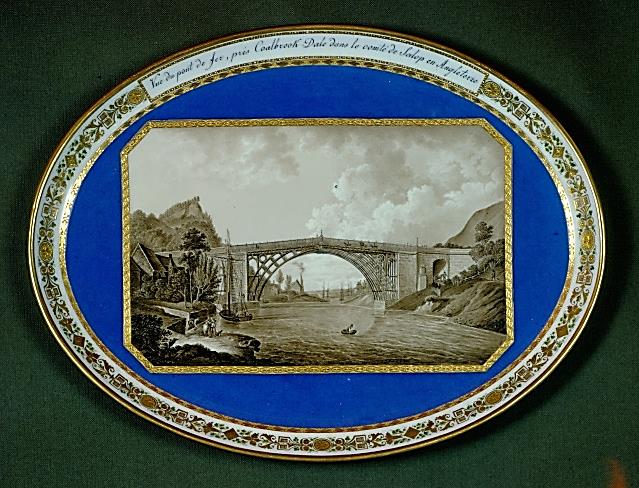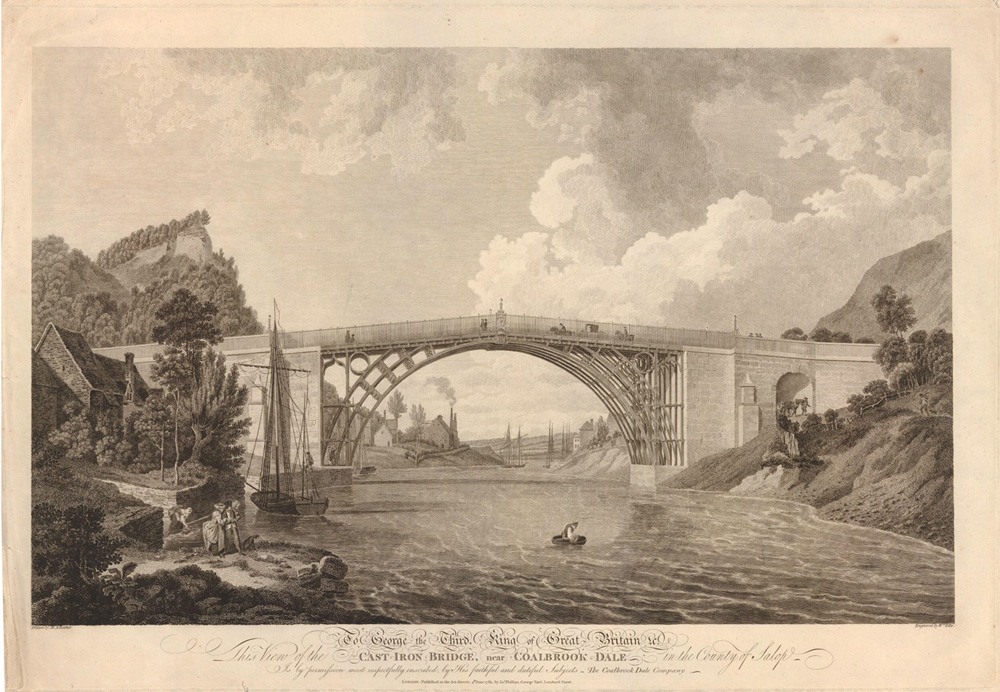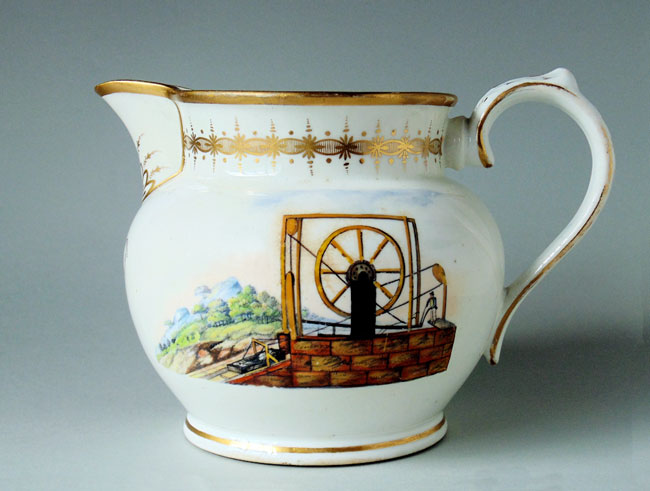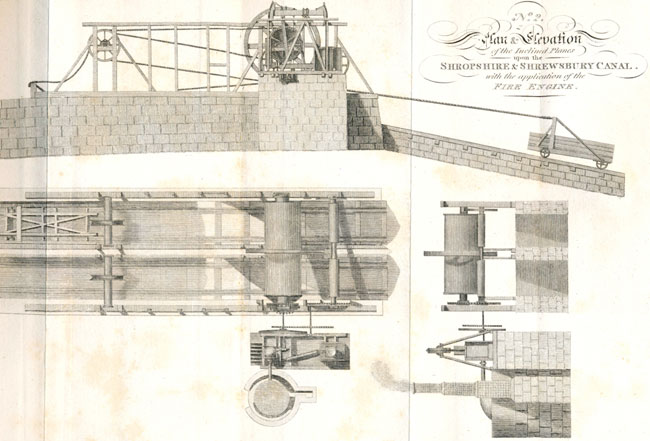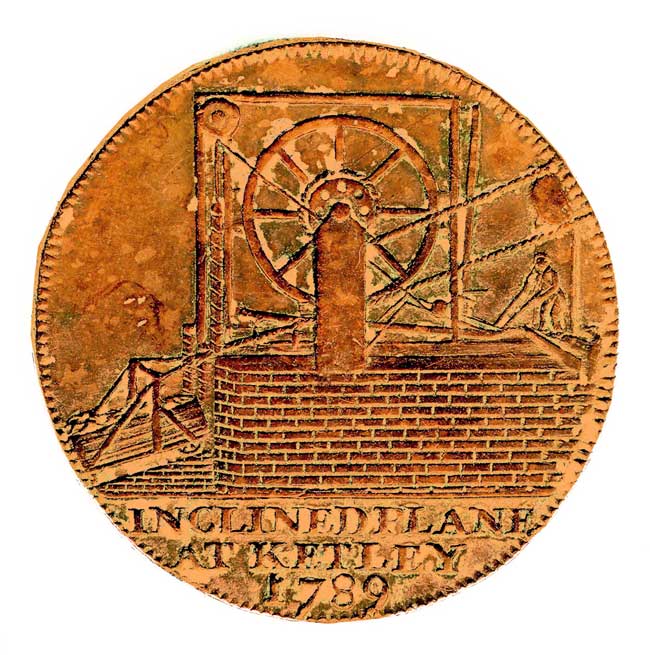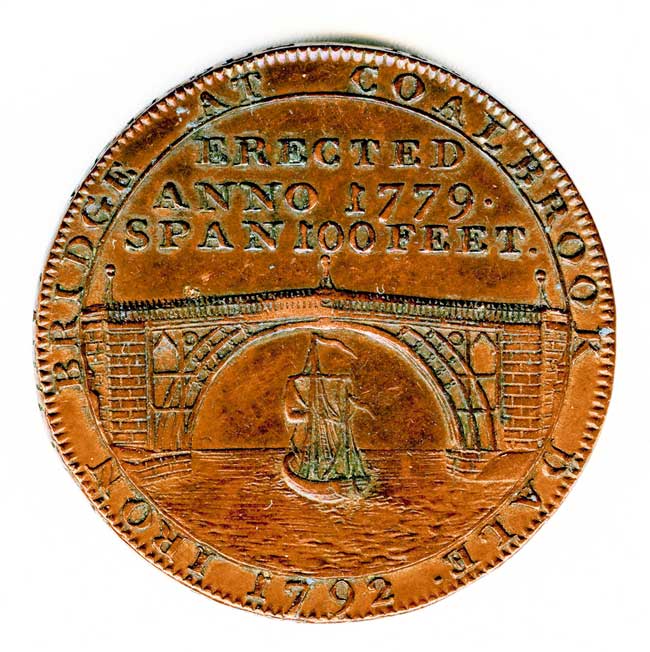Iron Bridge – Fine Porcelain
Members may be interested in this piece of porcelain which features the Iron Bridge at Coalbrookdale. It is a superbly painted and extremely accurate image of the Iron Bridge based on the William Ellis engraving of 1782 – itself based on an original painting by Michael Angelo Rooker. The item is a porcelain tray, part an Imperial Vienna Porcelain Factory Cabaret Set, comprising: Tray, Coffee Pot, Coffee Cup & Saucer, Sucre and Milk Jug, Circa 1801. Only the tray carries the image, which is set against a lovely Mazarin Blue ground. The inscription is in French. The set is displayed in the Museo delle Porcellane, Pitti Palace, Florence.
Porcelain comes quite high on my set of interests and it doesn’t come much better than this. Its rather a pity its not on a piece of English porcelain – of course one would immediately think of Coalport. I wrote about this item in the Caughley Society Newsletter No71, August 2017. Industrial Archaeology comes in many forms, as we all know!
- Porcelain tray, part an Imperial Vienna Porcelain Factory Cabaret Set
- William Ellis engraving of 1782 based on an original painting by Michael Angelo Rooker – © The Trustees of the British Museum
(The original engraving, shown above, was acquired by the British Museum in 1870 but is not on display. For full details click on this link).
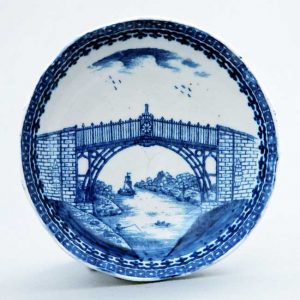
A saucer made at the Caughley factory circa, 1782-94 – (Image by kind permission of Caughley Society)
This rather naïve mostly printed, but with some hand wash, image of the Iron Bridge on a saucer was made at the Caughley factory circa, 1782-94. It is extremely rare with only one example known to date. The image contains one little known feature of the bridge when it was first built. If you look at the third, innermost, rib it will be seen that it does not continue right through to the base. This rib continuation was added subsequently. This feature can be most easily discerned in a 1780 print (woodcut) made by J Edmunds, from which this ceramic print was most likely made. John Willock.
- Jug made at the Coalport Factory Circa, 1810-1820 – Photo IGM
- Britain’s first canal inclined plane at Ketley (1789) in Shropshire – Photo IGM
- Coalbrookdale halfpenny Trade Token, dated 1792 – Photo IGM
- Coalbrookdale halfpenny Trade Token, dated 1792 – Photo IGM
Here is another piece of porcelain with industrial associations. The Jug was made at the Coalport Factory Circa, 1810-1820. One side of the jug carries an image of a stylised bird, the other an illustration of the Britain’s first canal inclined plane at Ketley (1789) in Shropshire. The image on the jug is taken from the reverse side of a Coalbrookdale halfpenny Trade Token, dated 1792. The token was payable at Coalbrookdale and Ketley. It took me some time before I connected the image with the token! Eventually the penny dropped as one might say!
The engraving is from Joseph Plymley’s A General View of the Agriculture of Shropshire (1813) and was done for Thomas Telford by Henry Williams. There were seven canal inclined planes on the Shropshire canal system, including the first one at Ketley. The jug is on display at the Coalport China Museum. It belongs to JF/JC Willock. An article on the above appeared in Ars Ceramica, (The Journal of the Wedgwood Society of New York) Number 28 -2012.
John Willock January 2021

